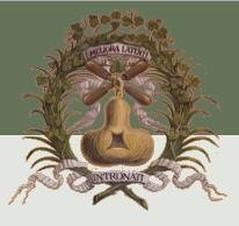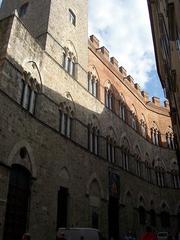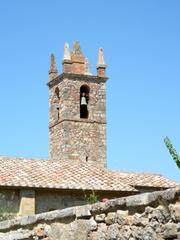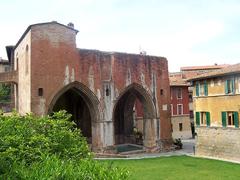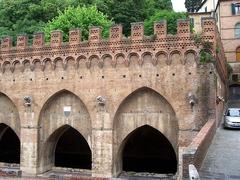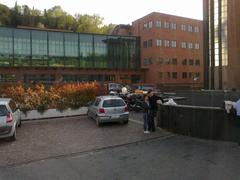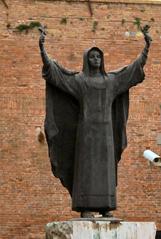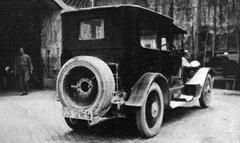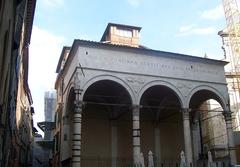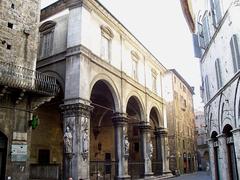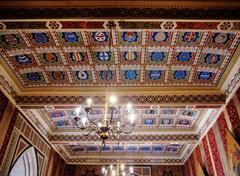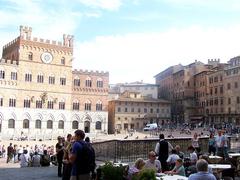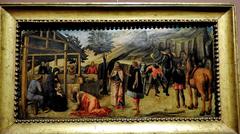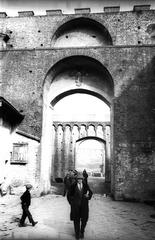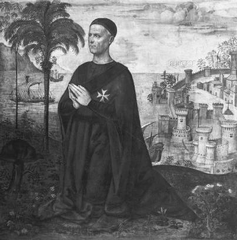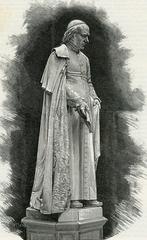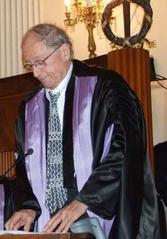Sant Abbondio Siena Italy: Visiting Hours, Tickets, and Travel Guide
Date: 14/06/2025
Introduction
Sant’Abbondio in Siena is a remarkable testament to the city’s layered religious, architectural, and cultural history. Situated within Siena’s medieval core and extending into its picturesque countryside, the church and its former monastic complex reveal centuries of evolving spiritual devotion and artistic expression. Originally founded as a monastic church dedicated to Saint Abundius, Sant’Abbondio played a key role in both the spiritual and social life of medieval Siena. Its significance is further underscored by its location along the Via Francigena, the historic pilgrimage route to Rome.
Visitors can expect to encounter an architectural palimpsest, where Romanesque solidity meets later Gothic and Baroque embellishments. The church’s art and architecture reflect Siena’s communal traditions, particularly its association with the Contrada della Chiocciola, one of Siena’s historic districts. Sant’Abbondio stands not only as a historical monument but also as a living symbol of Siena’s enduring relationship between faith, art, and community.
For those planning a visit, this guide provides practical details on opening hours, ticketing, accessibility, nearby attractions, travel tips, and special events, drawing on authoritative sources for an accurate and comprehensive overview (Albergo Minerva, Visit Siena, Siena Agriturismo, Travelling King).
Contents
- Origins and Early History
- Architectural Evolution
- Cultural and Religious Significance
- Pilgrimage and the Via Francigena
- Visiting Sant’Abbondio: Practical Information
- Visiting Hours and Tickets
- Accessibility
- How to Get There
- Nearby Attractions
- Special Events and Guided Tours
- Artistic and Architectural Heritage
- Preservation and Modern Use
- Sant’Abbondio in the Context of Sienese Monasticism
- Legacy and Continuing Significance
- Frequently Asked Questions (FAQ)
- How to Stay Updated
The History of Sant’Abbondio
Origins and Early History
Sant’Abbondio’s origins are rooted in Siena’s medieval expansion and religious fervor, with the church believed to have been established as early as the 11th-12th centuries. It was dedicated to Saint Abundius and formed part of a monastic community, mirroring trends across Tuscany where monasteries contributed to urban and rural development (Albergo Minerva). These centers fostered learning, charity, and agricultural innovation.
Architectural Evolution
Romanesque and Gothic Influences
The church’s architecture encapsulates the transition from Romanesque—characterized by rounded arches, thick walls, and sturdy masonry—to later Gothic elements, such as pointed arches and ribbed vaults, reflecting broader stylistic shifts in Siena (Old Town Explorer). While not as ornate as Siena Cathedral, Sant’Abbondio’s blend of brick and stone, modest decoration, and liturgical layout exemplifies the region’s ecclesiastical design.
Later Modifications
Subsequent centuries saw renovations incorporating Renaissance and Baroque features, including elaborate stucco work and Rococo decorations. The 18th-century rebuilding introduced a new church structure adjoining the original, retaining elements like the sacristy and oratory (mylakecomo.co).
Cultural and Religious Significance
Sant’Abbondio has long served as a spiritual and communal hub, hosting local devotions, feast days, and processions. Its links to the Contrada della Chiocciola embed it in Siena’s contrade system, connecting the site to the city’s vibrant social traditions (Oxford Bibliographies). Monasteries like Sant’Abbondio also contributed to manuscript preservation, education, and charity.
Pilgrimage and the Via Francigena
Located along the Via Francigena, Sant’Abbondio provided hospitality to travelers and pilgrims, cementing Siena’s role as a religious and logistical center and encouraging cultural exchange (Oxford Bibliographies).
Visiting Sant’Abbondio: Practical Information
Visiting Hours and Tickets
- Opening Hours: Usually open Tuesday to Sunday, 9:00 AM–6:00 PM (last admission 5:30 PM). Closed Mondays and public holidays.
- Admission: Free for individuals; €5 for adults on group visits, with discounts for students, seniors, and groups. Children under 12 typically free. Donations are encouraged to support preservation.
- Guided Tours: Available during peak seasons and can be booked in advance via the Visit Siena website.
Accessibility
- The church is wheelchair accessible with ramps and accessible restrooms. For special arrangements, contact the administration in advance.
How to Get There
- On Foot: 10-minute walk from Piazza del Campo within Siena’s pedestrian center.
- By Bus: Lines C1 and C2, stops near Via di Sant’Abbondio.
- By Car: Park at Parcheggio Il Campo or Parcheggio Santa Caterina; escalators and lifts assist with hilly terrain (Full Suitcase, Mama Loves Italy).
Nearby Attractions
- Siena Cathedral (Duomo di Siena)
- Piazza del Campo
- Palazzo Pubblico
- Santa Maria dei Servi
- Basilica di San Domenico
- Fontebranda (ItalyGuides, Tourist Secrets)
Special Events and Guided Tours
Sant’Abbondio hosts occasional concerts, religious festivals, and art exhibitions. For details, check the Visit Siena events calendar.
Artistic and Architectural Heritage
Sant’Abbondio’s interior features black marble altars, intricate stucco, and a Rococo dome fresco by Giulio Quaglio (mylakecomo.co). These elements illustrate the evolution from Romanesque simplicity to Baroque exuberance. The preservation of medieval springs and waterworks in its countryside location further highlights Siena’s engineering ingenuity (Siena Agriturismo).
Preservation and Modern Use
Restoration projects have stabilized the structure, preserved original masonry, and protected artwork, ensuring Sant’Abbondio’s continued role in Siena’s cultural life (Albergo Minerva). Some parts of the monastic complex are now private residences, and access may be limited in those areas.
Sant’Abbondio in the Context of Sienese Monasticism
As part of a network of monastic sites, Sant’Abbondio contributed to the city’s religious identity, artistic innovation, and community spirit (Bortolotti, 1983). Its legacy continues through cultural events and preservation efforts.
Legacy and Continuing Significance
Sant’Abbondio remains a vital link to Siena’s medieval and spiritual heritage. Its architecture and art offer insight into the city’s evolution, while its enduring role in communal life and festivals keeps its traditions alive (Mapcarta).
Frequently Asked Questions (FAQ)
Q: What are the opening hours of Sant’Abbondio?
A: Tuesday–Sunday, 9:00 AM–6:00 PM; closed Mondays and public holidays.
Q: How much do tickets cost?
A: Admission is free for individuals; €5 for group tours, with concessions.
Q: Is Sant’Abbondio wheelchair accessible?
A: Yes, with ramps and accessible facilities.
Q: Are guided tours available?
A: Yes, bookable in advance through the Visit Siena website.
Q: How do I get there from the city center?
A: 10-minute walk from Piazza del Campo, or bus lines C1/C2.
Plan Your Visit to Sant’Abbondio
To maximize your visit, download the Audiala app for audio guides and real-time updates. For further guidance, consult the Visit Siena website and follow local parish updates.
Practical Tips
- Dress Code: Shoulders and knees covered.
- Photography: Allowed—no flash during services.
- Footwear: Comfortable walking shoes recommended due to hilly, cobbled streets.
- Best Seasons: April–May, September–October for mild weather and fewer crowds (Travelling King).
- Language: Italian is prevalent, but English is widely understood in tourist areas.
Related Siena Travel Resources
Summary and Call to Action
Sant’Abbondio stands as a multifaceted heritage site, reflecting Siena’s spiritual, artistic, and communal evolution. Whether you are an admirer of Romanesque architecture, a pilgrim on the Via Francigena, or a traveler seeking Siena’s hidden stories, Sant’Abbondio offers a uniquely peaceful and contemplative experience. Preservation efforts and cultural programming ensure that its legacy endures for future generations.
Download the Audiala app for exclusive audio guides and up-to-date visitor information. Explore related articles, and follow us on social media for the latest news, events, and insider tips about Siena’s treasures.
Sources and Further Reading
- Albergo Minerva - The Historical Origins of Siena
- Visit Siena Official Website
- Siena Agriturismo - Medieval Springs in the Countryside of Siena
- Old Town Explorer - Siena Architecture and Historical Sites
- Travelling King - Ultimate Travel Guide to Siena
